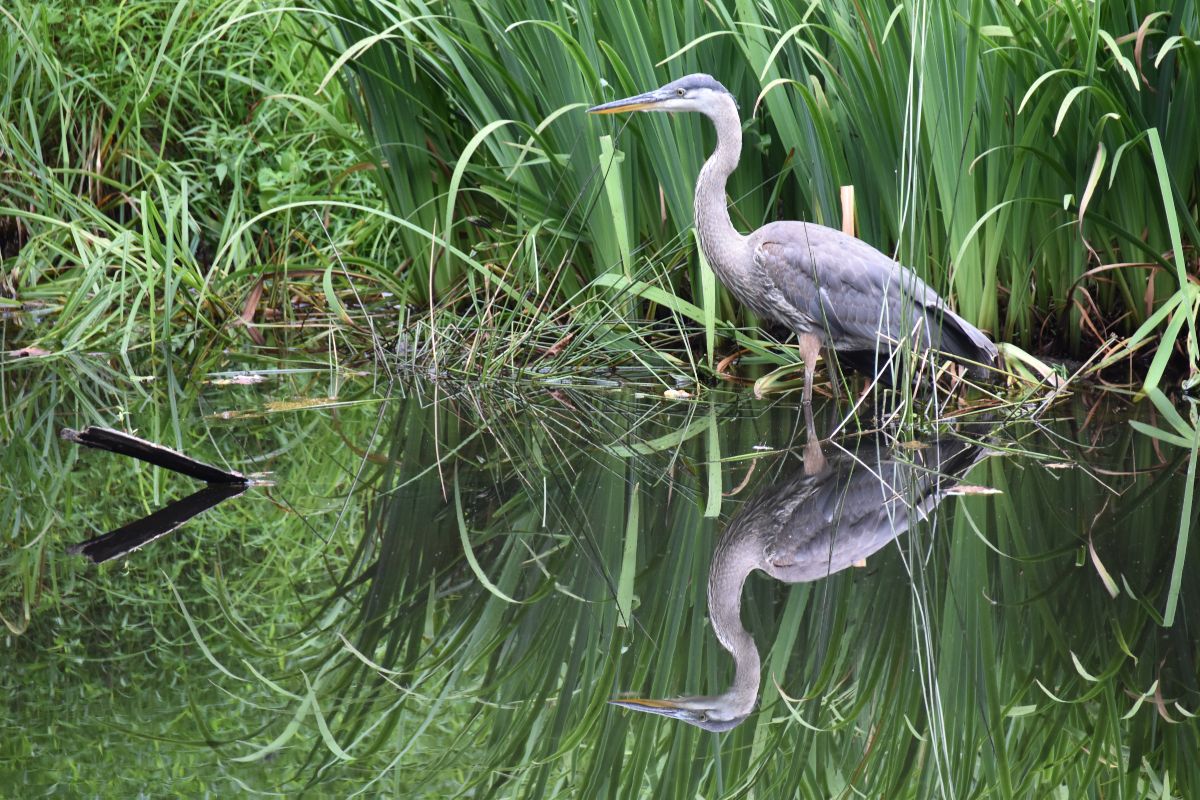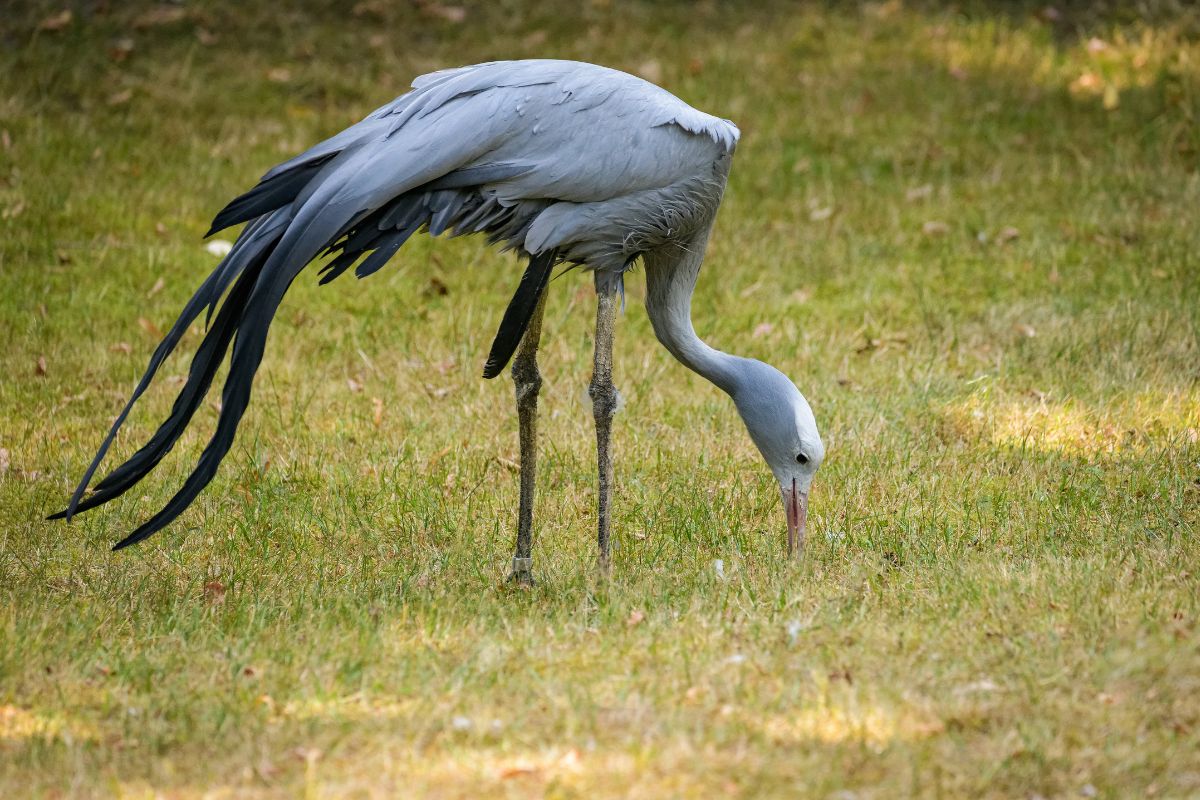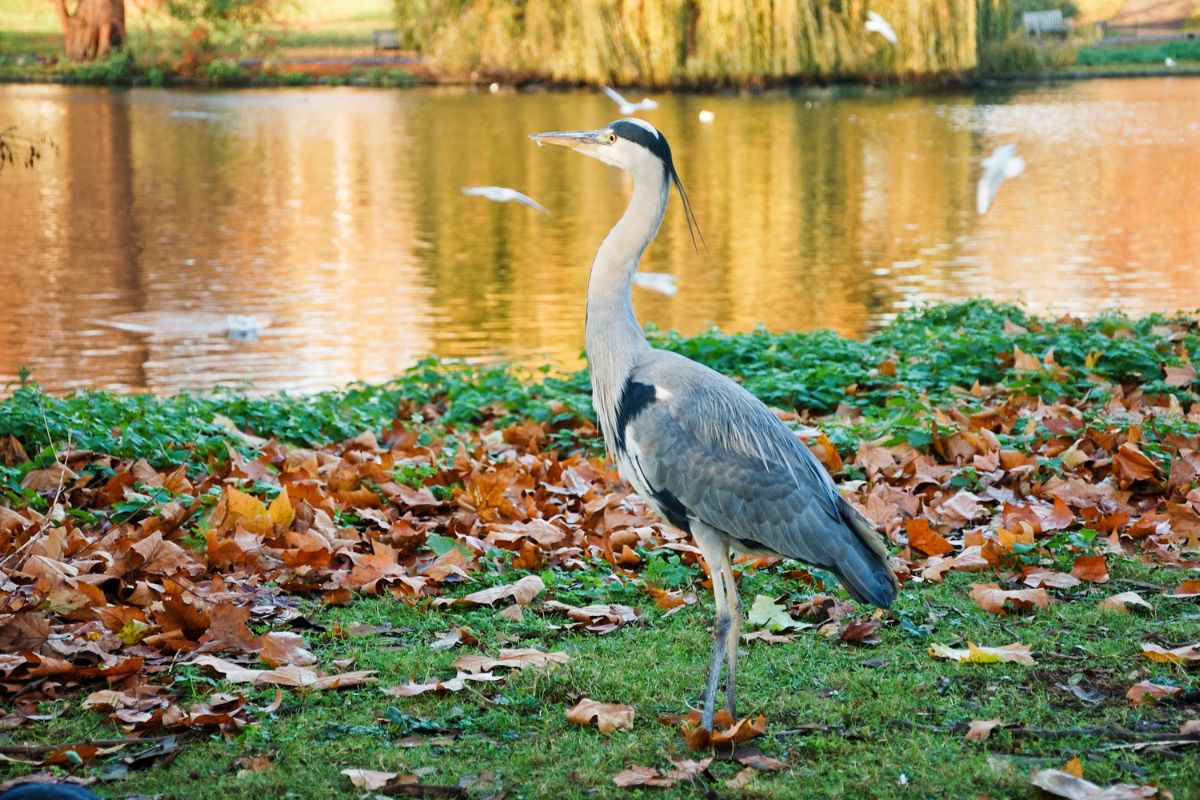If you live in the southern or midwestern regions of the United States, there’s a good chance you’ve seen cranes milling about from time to time.

These long-necked birds are particularly fond of wetlands, marshes, and swamps—and it’s not uncommon to see them poking around wet soil in search of food. But what, exactly, do cranes eat?
In this article, we’ll explore all the different meals cranes enjoy, helping you better understand what these majestic birds are searching for when they visit your lawn or begin frequenting your favorite local pond!
Contents
A Crane’s Diet Depends on Its Habitat
Before we delve into the specifics of what cranes enjoy snacking on, it’s crucial to note that a crane’s diet varies depending on its species—and, therefore, its habitat.
For example, sandhill cranes (often found in Southern states like Florida and Mississippi) prefer spending their time in or near swamps and brackish marshes. Consequently, their diet primarily consists of wild plants and small amphibians.
But whooping cranes (most commonly found in states like Texas) can enjoy a diverse diet that ranges from crabs and birds to wild berries. That’s because whooping cranes tend to migrate long distances, allowing them to experience a diverse range of ecosystems.
That said, most cranes do share a similar “menu” of favorite foods, most of which fall into one of three categories:
- Plants
- Insects
- Animals
Types of Plants Cranes Eat

If threatened, cranes may attempt to defend themselves using their relatively sharp beaks and impressive wingspan. But most don’t hunt animals like birds of prey like hawks, owls, and eagles for their meal.
Instead, these stately birds often enjoy plant-based diets rich in various micronutrients and fiber. Some of the most common types of plants cranes of all species enjoy are:
- Wild grasses
- Fresh leaves
- Fresh fruits
- Seeds
- Mushrooms
- Flowers
Some crane species also poke down into the soil to reveal and remove plant roots. This is especially true of species living in coastal areas or prefer marshy habitats, as aquatic plant roots tend to be loose and easy to retrieve.
Unfortunately, these eating habits can spell disaster for your lawn and garden.
However, it’s crucial to remember that state and federal laws protect many crane species. As such, you should never attempt to capture or harm a crane that’s decided to enjoy your yard’s culinary delights.
Besides, if you spot a crane poking around your yard, it might just be clearing your property of unwanted bugs!
Types of Insects Cranes Eat

While a local flock of cranes might not be able to help you get rid of ant, flea, or cockroach infestations, they can remove other pesky bugs from your yard by gobbling them down. Since cranes don’t regularly consume other animals, insects are the crane’s way of incorporating much-needed protein into their diet.
Insects are readily available throughout the year and far easier to catch and digest than small animals, which is helpful for cranes since they aren’t agile creatures. Cranes usually hunt slow-moving insects or those without wings.
But what are a crane’s favorite grubs? Well, as with plants, the answer depends on what’s available.
That said, most crane species are perfectly happy to dine on:
- Beetles
- Insect larvae
- Earthworms
- Dragonflies
- Grasshoppers
- Millipedes
These birds are also known to enjoy the occasional spider, especially if the spider in question is on the larger end of the spectrum. So, if you’re afraid of spiders, you’ll be glad to see a few cranes exploring your yard from time to time.
Cranes are also fond of devouring hapless snails and slugs. In fact, this raw, unseasoned type of escargot is far easier to target than fast-moving dragonflies and grasshoppers, making them a natural choice for cranes living near brackish waters.
Still, insect-based protein isn’t always on the menu for these slender-necked birds. After all, many insect species virtually disappear during the frigid winter months, especially in areas that experience heavy snowfall or long frosts.
For that reason, cranes have also adapted to eat some types of small animals. But it’s essential to note that most crane species will only go after animals when other protein sources are unavailable.
Types of Animals Cranes Eat

Though cranes eat the odd animal when necessary, it’s vital to remember that these birds don’t have teeth. So their ability to grind and tear apart flesh, muscle, and bone is significantly limited.
But a crane’s stomach acids are strong enough to kill and dissolve most of these tissues, and its long neck is ideal for preventing captured prey from escaping. So, though you’re far more likely to see a crane munching on worms and roots than an unlucky mouse, it’s not impossible to experience the latter.
The animals often targeted by these birds tend to be small and relatively defenseless. Great examples include:
- Field mice
- Small crabs
- Juvenile fish (fry)
- Anole lizards
- Baby songbirds (hatchlings)
As with all other crane-friendly foods, the choice of which animals to eat almost always comes down to location.
For example, cranes surveying marshlands near coastal areas are far more likely to peck through a crab’s shell and enjoy crabmeat for its meal, whereas those living in the Great Plains area are more likely to enjoy field mice when insects or other protein sources are scarce.
Sadly, cranes desperate for protein might also attack and consume recently hatched songbirds, as these creatures are small enough to slide down their gullets and almost entirely defenseless.
Final Thoughts
Like other birds, cranes are happy to eat whatever food is available nearby, so long as they can stomach it! This often includes plants and insects, though some crane species are also fond of scooping up anole lizards and blue crabs.
The precise diet of any given crane depends on its species and habitat. So, if you’re curious to find out what your local cranes enjoy for breakfast, lunch, and dinner, you’ll need to consider their species and what flora and fauna are readily available in your area.
